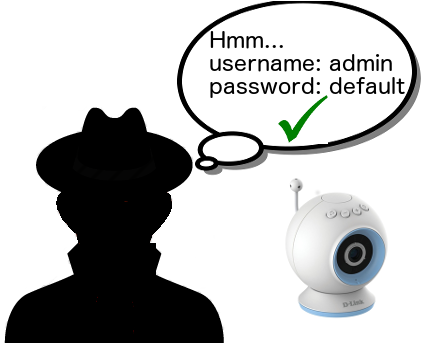 There seems to be a scary news article every month or so that makes it seem like home tech is particularly vulnerable to evil hackers. The truth is that anything – be it your home, car or home tech – can be vulnerable if you don’t take precautions. You likely don’t leave your car unlocked with the keys in the ignition, but this unfortunately is essentially what sometimes happens with home technology.
There seems to be a scary news article every month or so that makes it seem like home tech is particularly vulnerable to evil hackers. The truth is that anything – be it your home, car or home tech – can be vulnerable if you don’t take precautions. You likely don’t leave your car unlocked with the keys in the ignition, but this unfortunately is essentially what sometimes happens with home technology.
The biggest issue is that people often don’t change the default passwords that come with their home tech gear. The classic example is a network camera from a big box store. These are often just plugged in right out the box and used with the defaults. Sure its easy, but its also foolish. Some hackers find it fun to scour the Internet looking for network cameras with default passwords so they can log in and link to your video. It gets really creepy when they log into a camera with two-way communications and they start talking to you! The same goes with consumer automation packages – someone can jump onto your system and start turning your lights on and off. The good news is that most hackers are harmless, and some even are trying to warn you before a real thug logs into your system. Most of these types of issues can be avoided by simply changing the default password. And while you’re at it, make it a good password that is hard to hack!
Humans make errors, and humans write the programs for home tech. Occasionally there is a bug in the code that may be security related. Most companies are open and transparently admit to the issue and provide a timely software or firmware update for their products. That’s why its always a good idea to immediately check the manufacturer’s website to see if there is new software or firmware to update when you install a device. You should also regularly check for updates in case new issues are found.
Now that you’ve changed the password and updated the software, don’t stop there. Make sure you’re network is safe too. What’s the point of locking down a fancy new home automation system if it uses your insecure Wi-FI? A common problem is that people make their Wi-Fi passcode something easy to remember (like their phone number), but this is easy for hackers too. Use a strong password – even a moderately stronger one is better than something simple that anyone off the street or behind a computer on the other side of the world could figure out.
You can dig a lot deeper on home tech and network security including closing or blocking open ports and MAC filtering, but a balanced approach will get you started in the right direction. Like anything from a car to home tech, if there is perceived value and its easy enough, someone will figure out a way to break in. There is nothing special about home tech in this regard. Your job is make hacker’s jobs hard enough so they’d rather choose an easier target.
